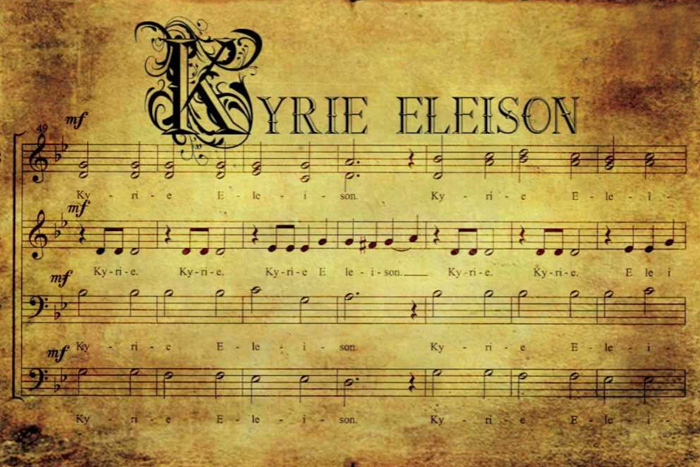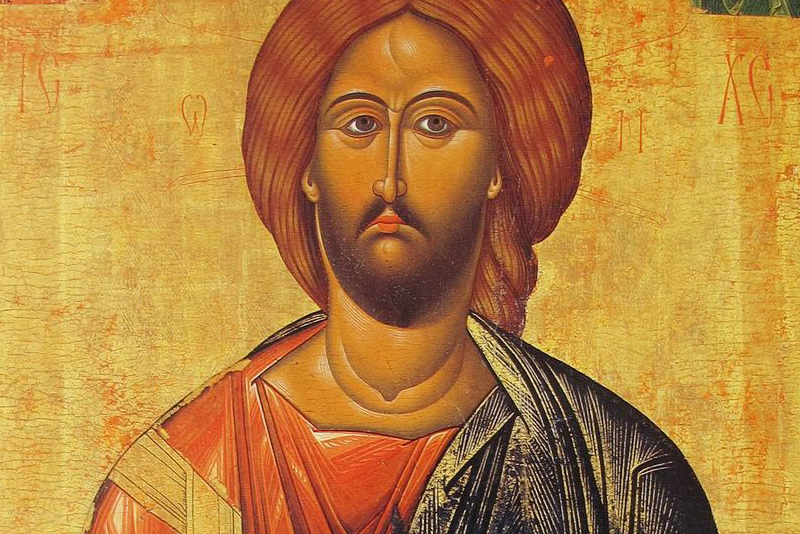
Lord have mercy is probably the most frequently used phrase in the Orthodox worship practice. Whenever a person enters a church – in the morning or evening, in Lent or on Easter, on holidays or weekdays – he will always hear this prayerful appeal to God. Why did this prayer become the most popular and when did it appear in the divine service? What is its place among other prayers?
Lord Have Mercy in History. Antiquity
Phrases similar to Lord have mercy are known from pagan literature. For example, there is an inscription with an invocation to the goddess Nemesia: Κυρία Νέμεσι ἐλέησον (Lady Nemesia, have mercy). There is a phrase in the Discourses of the Stoic philosopher Epictetus (2nd half of the 1st century – early 2nd century), recorded by Arrian (2nd century AD), mocking people who rely on fortune-tellers, “We cling to the fortune-teller and call upon him as if he were a god, asking him, ‘Lord, have mercy'”. – Epict. Diss. II 7. 12). The word κύριος (Lord, lord) was used in the ancient pagan world both in relation to gods and to address secular rulers. Christians of the first centuries shed blood for the right to call only Jesus Christ and no one else the Lord: “For you only are holy, only you are Lord Jesus Christ, to the glory of God the Father.” (Great Doxology).
Ancient Judea
The word κύριος is widely used in the texts of the Septuagint as a translation of the Hebrew word Adonai (Lord) and as a substitute for the Sacred Tetragrammaton of the Name of God. Already in the texts of the Bible we find many different variations of the use of the phrase Lord have mercy, especially in the Psalms: “Lord, have mercy on me”, “Have mercy on us, Lord” etc. (Psalm 6:2; 9:13; 31:9 and others). Petitions for God’s mercy toward His people were also used in the ancient Jewish worship service, as well as during ritual meals and table blessings, which served as the core and a basis for the gradually evolving Christian worship. According to the New Testament, Jesus Christ was often addressed in similar terms when he was asked for healing and pardon, Jesus, thou son of David, have mercy on me (Luke 18:38) of the blind man of Jericho; Have mercy on me, O Lord, thou son of David (Matthew 15:22) by the Canaan woman. Not surprisingly, this expression in its most basic form (Lord have mercy) was also included in the early Christian worship.
Christian East
The prayer proclamation or acclamation Lord have mercy was already well established in the Christian worship of the East by the end of the 4th century. While we do not find any mention of the practice of singing or reading Kyrie eleison during services in the writings of the early fathers, St. John Chrysostom repeatedly testifies to this in his Homilies. The first historical mention of the use of this invocation is found in the famous liturgical canonical document titled The Apostolic Constitutions. It notes that for every request made by the deacon, the people responded, “Lord have mercy”. (see Apostolic Constitutions, Vol. VIII, 6, 9). Thanks to the considerable authority of the Apostolic Constitutions, many elements of worship described in this document, in particular the litany texts, are still present in the Byzantine divine service. We use Lord have mercy in the Orthodox liturgical practice both as a response to the deacon’s petitions and as an independent element in the daily divine service cycle. The constant repetition of this prayer can range from 3 to 12, 30, 40, and even more times, such as during the Litiya at the All-Night Vigil or during the Praise of the Cross on the Feast of the Exaltation of the Cross.
Kyrie Eleison was also known in the West
Gaius Marius Victorinus († 364), an orator and philosopher, converted to Christianity and composed a hymn to Christ where there are numerous Miserere Domine and Miserere Christe (Lord, have mercy, and Christ, have mercy). However, Lord have mercy did not appear in the West until the beginning of the 5th century as a regular part of worship, and when it did, it was due to Eastern influences. The testimony of Etheria, a Western pilgrim to Jerusalem, who told her compatriots about the divine service traditions of Jerusalem, has been preserved: “And when the deacon pronounces the name of each one, there are many boys who constantly answer, Kyrie eleison, or as we would say, Miserere Domine.” (Eger. Itiner. 24. 5). Gradually, the Greek Kyrie eleison replaced the Latin Miserere Domine which was facilitated by the Second Vaison Council († 529), chaired by St. Caesareus of Arles († 542). Its 3rd Rule regulated the introduction in Gaul of Kyrie eleison “… following the example of Rome, the Italian regions and the whole East with great affection and contrition” (Mansi. T. 8. P. 727). Since then, Kyrie eleison, Christe eleison, Kyrie eleison became an integral part of ancient Roman liturgy.
Finally, we may conclude that the formula Lord have mercy could have influenced the history of the Jesus Prayer, a key phenomenon for Orthodox ascetics and spirituality, which gradually evolved in the monasteries of Egypt. The manifold and extensive use of the prayer Lord have mercy during the church services of the liturgical cycle brings regular public worship closer to the practice of unceasing Jesus Prayer and introduces the faithful to the treasury of spiritual life of the Holy Fathers, training them in the devout and tireless invocation of the Lord.



